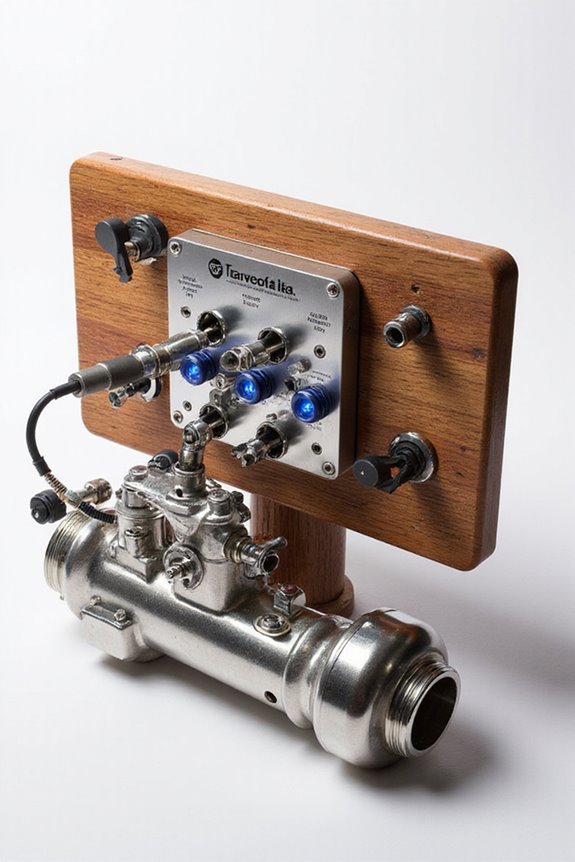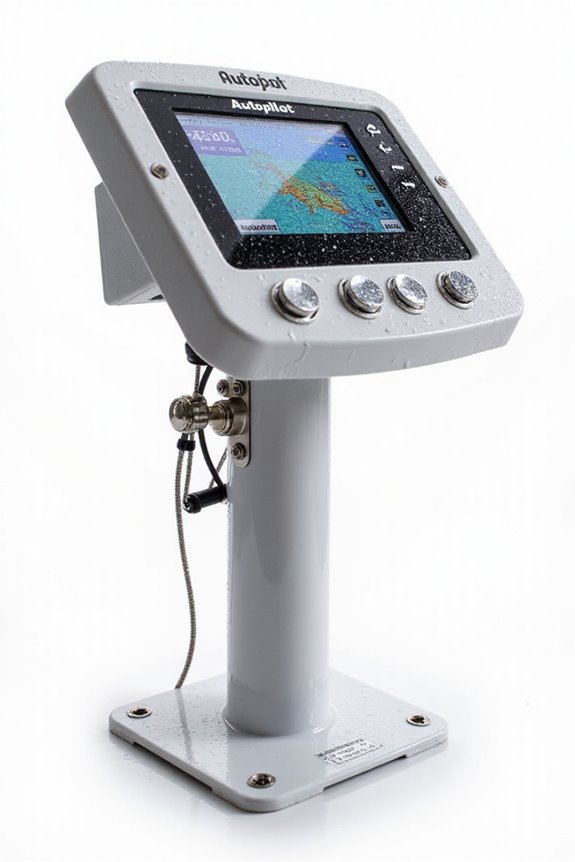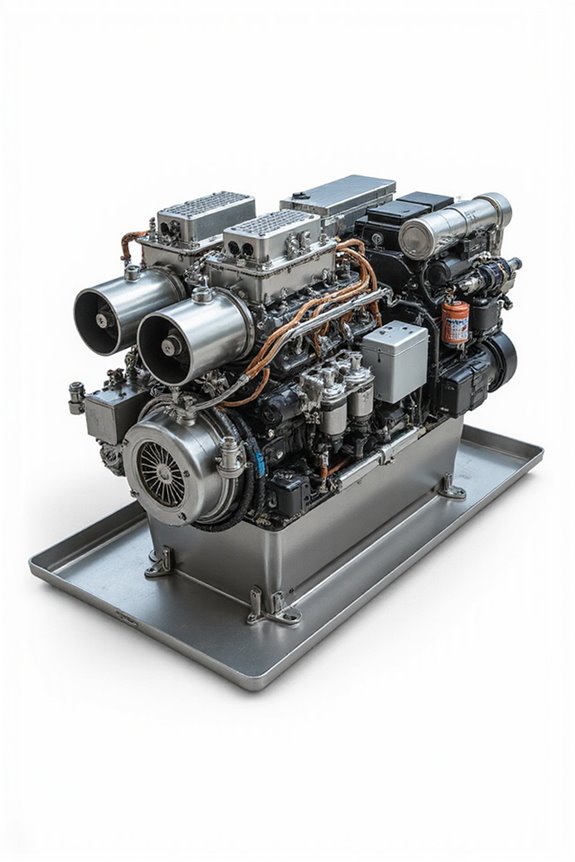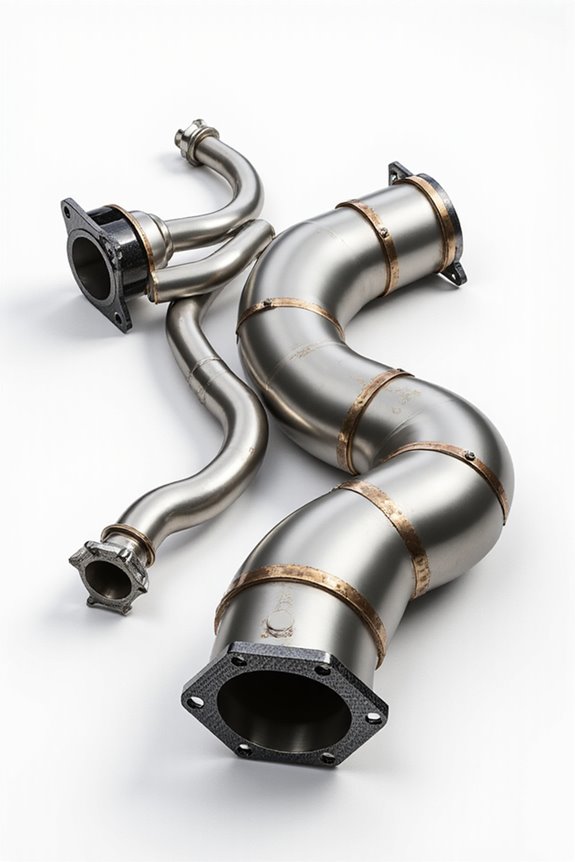We use predictive maintenance sensors on our yachts to catch problems before they spoil our trip—think of them as ever-watchful crew members pinging us about unusual vibrations or temperature spikes. These sensors feed real-time data to cloud systems, helping us schedule smart maintenance that prevents breakdowns and keeps everyone safe on board. Fewer surprises mean less stress and smoother adventures. Curious how this tech extends equipment life and minimizes downtime? Let’s explore that next.
Key Takeaways
- Real-time sensor data detects equipment anomalies early, preventing sudden failures during voyages.
- Timely alerts enable crews to follow safety protocols and address issues promptly.
- Continuous monitoring of engine and system health reduces onboard hazards and emergency repairs.
- Predictive maintenance minimizes downtime, ensuring systems operate reliably throughout trips.
- Enhanced equipment lifespan and maintenance history increase yacht safety and operational confidence.
Real-Time Data Collection via Predictive Maintenance Sensors
When we talk about real-time data collection on yachts, we’re really diving into how predictive maintenance sensors keep everything running smoothly—and safely. These sensors gather info on things like vibration, temperature, and pressure, sending it to cloud-based systems for quick analysis. But here’s the kicker: without proper sensor calibration, our data integrity could take a nosedive, leading us astray. We want reliable info to catch issues early and avoid surprises at sea, right? By regularly calibrating sensors, we guarantee they give accurate readings that keep our whole system trustworthy. Plus, having this real-time data at our fingertips means we’re not just guessing but making solid, informed decisions. It’s like having a crew member who never sleeps, watching the yacht’s essential signs around the clock. Pretty comforting, don’t you think?
Early Detection of Equipment Anomalies
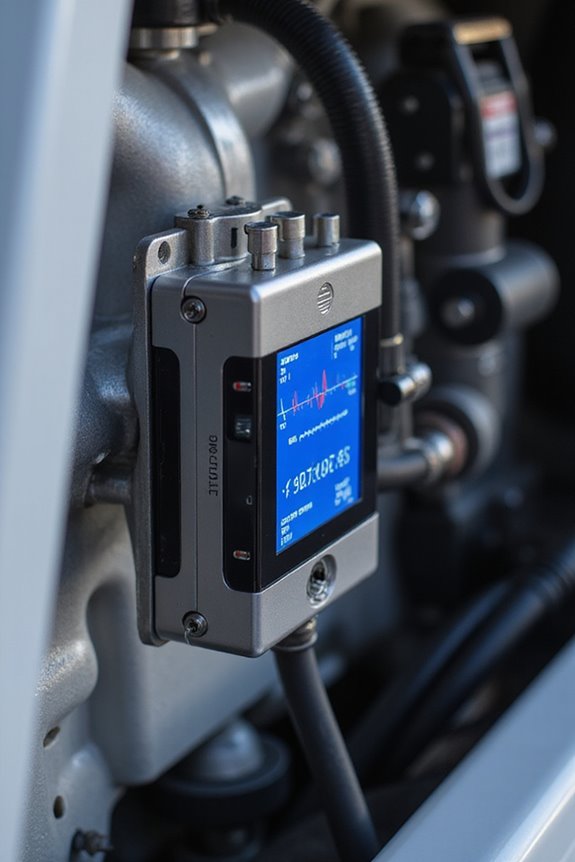
Since we all want to avoid nasty surprises on the water, early detection of equipment anomalies is a game changer. By carefully calibrating sensors and setting smart anomaly thresholds, we catch issues like unusual vibrations or temperature spikes before they snowball into costly failures. These sensors constantly monitor things like engine heat and pressure, scouting for anything out of the ordinary. Plus, with continuous sensor calibration, the data stays sharp and reliable — imagine it like tuning a guitar to keep the music playing smoothly. When something crosses an anomaly threshold, we get alerts that let us act fast, keeping everyone safe and the yacht humming along. So, why wait for a breakdown when technology can spot trouble first? It’s like having a trusty lookout watching over us 24/7.
Scheduling Maintenance to Prevent Failures
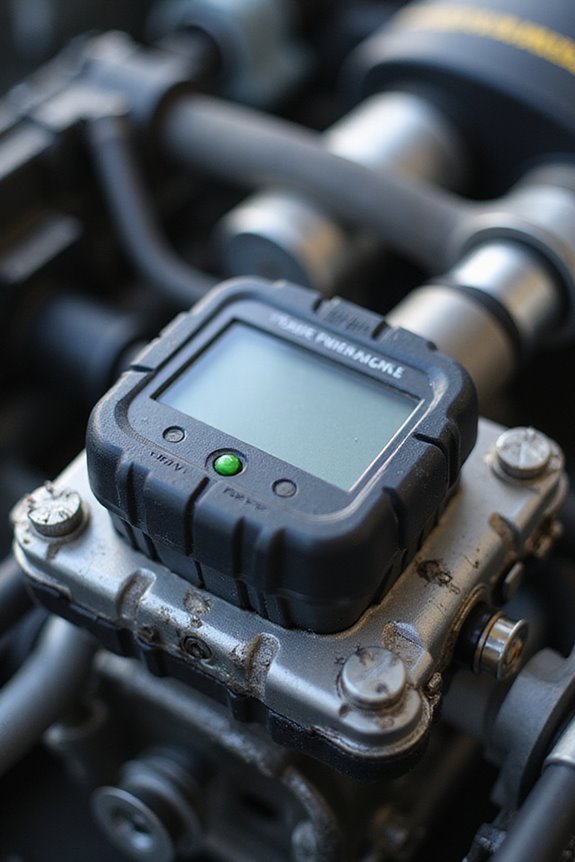
Catching equipment issues early is a great start, but we’ve got to keep the momentum going by scheduling maintenance smartly to stop failures before they happen. By using clever maintenance strategies—like automating reminders through Yacht Planned Maintenance Systems and relying on real-time data from IoT devices—we can set up scheduling techniques that fit the actual condition of each part. No more guessing games or fixed-date hassles; we maintain exactly when needed. Plus, having standardized workflows means every task is handled the right way, every time. Ever wondered how professionals juggle it all? Computerized Maintenance Management Systems (CMMS) and good communication with trusted service providers make a big difference. Together, these smart scheduling methods keep our yachting safe and running smooth—no unexpected surprises on deck!
Minimizing Downtime and Operational Risks
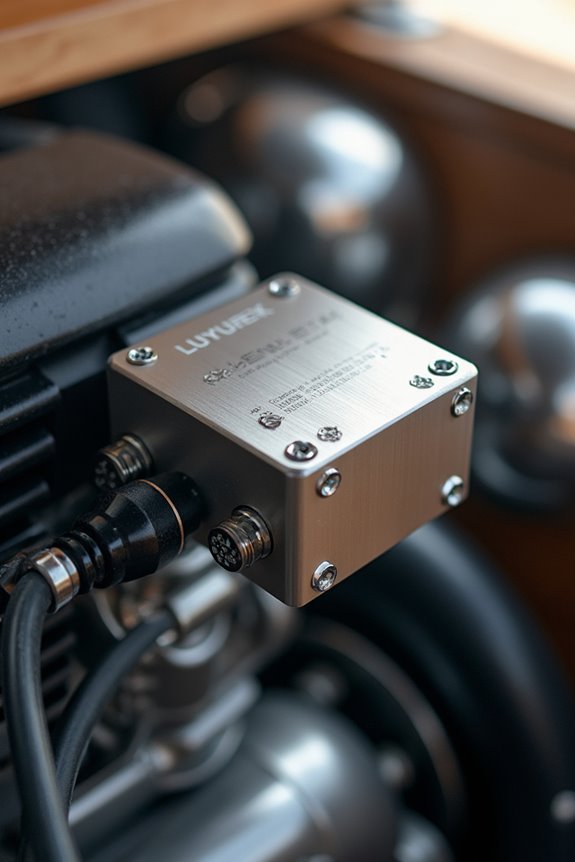
Though we all hope for smooth sailing, equipment downtime and unexpected risks can throw a wrench in the best-laid plans. That’s where predictive maintenance sensors become our best crew members. By constantly collecting real-time data, these sensors help us perform thorough risk assessments and downtime analysis, so we catch potential problems before they cause trouble. Imagine reducing unplanned stops simply by knowing when to fix something—sounds like a dream, right? Automated alerts and remote monitoring let us act swiftly, avoiding costly emergencies and keeping operational risks low. Optimizing maintenance schedules through data means we aren’t fixing what isn’t broken or ignoring what needs attention. Together, these tools help us minimize downtime and navigate yachting challenges with a proactive edge—making smooth sailing just a little more achievable for all of us.
Enhancing Safety for Crew and Passengers
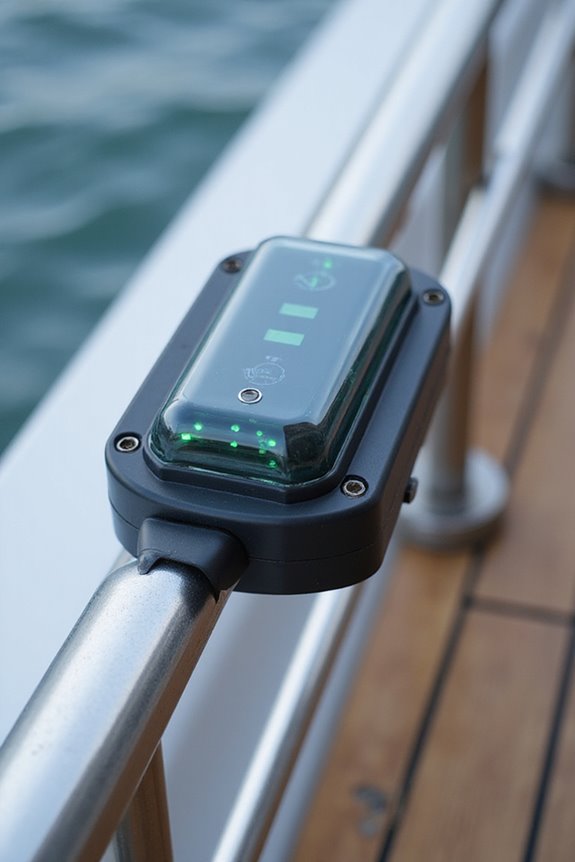
We’ve seen how predictive maintenance sensors can keep a yacht running smoothly, but safety for everyone onboard is where their value really shines. These sensors catch equipment glitches early, so sudden breakdowns don’t surprise us mid-voyage—or worse, put lives at risk. With timely alerts, our crew can follow established safety protocols and handle repairs with confidence, reducing onboard hazards. This proactive approach supports better crew training too, helping everyone stay sharp and ready for any situation. Plus, by avoiding emergency fixes while at sea, stress lessens, and focus improves—because who wants the crew juggling repairs in rough waters? Ultimately, it’s about protecting our whole yacht family, from passengers to crew, ensuring each adventure feels as safe as it is exciting. After all, smooth sailing beats emergency scrambling every time.
Extending Equipment Lifespan and Maximizing Investment
Since keeping our yacht’s equipment in top shape isn’t just about avoiding breakdowns, it’s also a smart way to protect our investment and stretch the life of costly gear. Predictive analytics help us spot wear and tear before it turns into costly repairs, thanks to real-time sensor data and smart maintenance strategies. Isn’t it great knowing our vessels stay reliable longer, saving us from surprise bills? By using adaptive schedules based on actual equipment health, we cut downtime and boost efficiency—plus, our yachts hold better resale value with clear maintenance histories. Embracing these tools isn’t just savvy; it’s a way we safeguard both safety and our wallets, making every voyage smoother and every dollar count. Who wouldn’t want that peace of mind on the water?
Frequently Asked Questions
How Do Predictive Maintenance Sensors Integrate With Existing Yacht Systems?
Ever wondered how sensor compatibility truly works? Well, we guarantee seamless system integration by using standardized protocols, letting predictive maintenance sensors communicate effortlessly with existing yacht systems—bringing us together in a unified, smarter yachting experience.
What Types of Sensors Are Most Effective for Different Yacht Machinery?
When we talk about engine temperature and vibration analysis sensors, they’re essential for keeping yacht machinery healthy. Together, they help us spot problems early, ensuring smoother trips and a shared sense of safety on the water.
Can Predictive Maintenance Sensors Be Retrofitted on Older Yachts?
Think of retrofitting sensors like upgrading an old ship’s compass—challenging but rewarding. We embrace retrofitting challenges together, ensuring sensor compatibility, so even older yachts can benefit from modern tech and join the safety-focused yachting community.
What Is the Average Cost of Installing Predictive Maintenance Sensors?
When we explore sensor installation, the cost analysis shows a high initial investment, often influenced by sensor complexity and integration needs. Together, we can weigh upfront expenses against long-term benefits smartly, making informed decisions for our fleet.
How Is the Data From Sensors Protected Against Cybersecurity Threats?
Did you know over 90% of sensor data is safeguarded by data encryption? We rely on continuous threat detection to protect our shared yachting systems, ensuring our sensor data stays secure and our community stays safe together.

